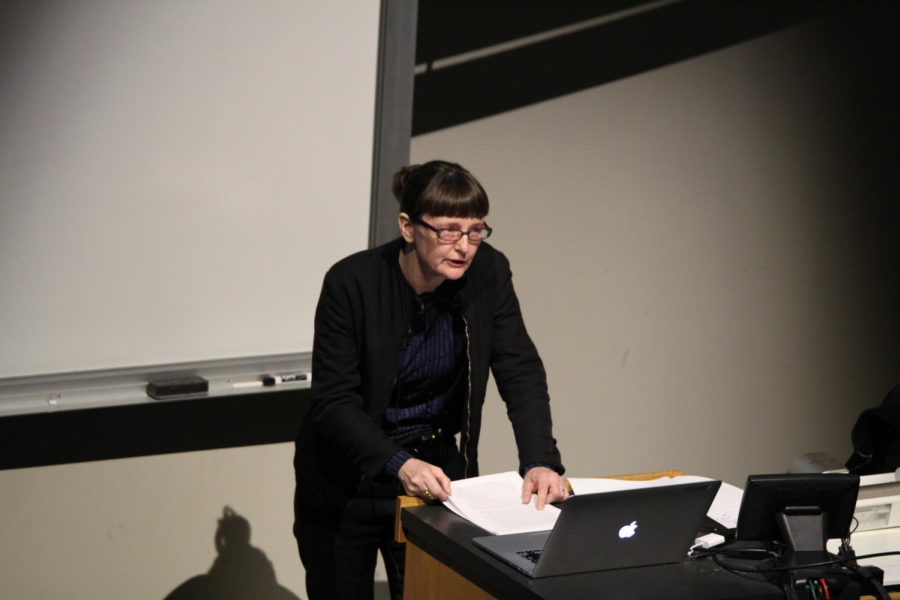A straighter kind of hip
Historian Felicity Scott spoke to a packed hall in the College of Design on March 3 about the evolution of technology and architecture.
March 3, 2017
Living through a transition is a common theme that arose during architecture-devoted, historian and theorist Felicity Scott’s lecture about refining a new world of technology Friday evening in the Kocimski Auditorium of the College of Design, gathered by some 250 people including students and faculty.
Scott is an architecture associate professor from Columbia University, and she focuses on “articulating genealogies of political and theoretical engagement with questions of technological and geopolitical transformation within modern and contemporary architecture, as well as within the discourses and institutions that have shaped and defined the discipline, sometimes evidently, sometimes less so,” throughout her work, says the Graduate School of Architecture, Planning and Preservation (GSAPP.)
The associate professor is also the Ph.D. program director for architecture, which encompasses history and theory, and co-director of the “Critical, Curatorial and Conceptual Practices in Architecture Program at the Columbia University Graduate School of Architecture, Planning and Preservation,” according to the College of Design website.
Scott’s focus developed throughout the 1970s, when a group called Project One emerged and flourished as other historical events took place before their eyes.
Project One is made up of artists, architects, filmmakers, musicians and more.
“People continued to flow into Project One … from other countries…” Scott said.
In other words, the quickly changing culture and development of space technology sparked an impact on what evolved into Scott’s future, as well as futures of young architects and artists today.
After Project One took off, the group of individuals played a role of communicative influence to those both similar and different to Project One.
Scott also discussed some evolution of what was needed of designers, starting from as early as the 1920’s, and how this turned into Alternative Culture.
Throughout this evolution, Scott discussed, was what turned out to be “good and bad technology,” as said by Scott.
One of the new technologies that arose was started by Project One, beginning in San Francisco.
Scott said that the communication and new technology was on behalf of “the computers and tools [made by Project One],” because this was a time of transition and change.
Scott continued to explain of the “new rules of the beginning [after the time of transition].”
“[Computers] go through the exchange [of communication] … so it is about the technology and how it is used,” Scott said.
The complexity of the subject of this new world, Scott said, was how many different people there were that all came together with the common goal: communication on a new level.
This was “a new generation of tools―or computers,” Scott said.
In addition, the audience that these people were trying to reach, according to Scott, was even greater than the variety of individuals within Project One.
“The [goal] was to make technology accessible to people, who normally don’t have access to technology, to have them understand what computers can do … here at Project One, without coming down to Project One,” Scott said.
In other words, it was to “Integrate new techniques during a time of transition.”
“These two worlds coming together in an ‘impossible’ way,” Scott said.
Within this time, it was illegal to be going about these escapades, but Project One was still willing to do what they wanted, and Scott believes that is what people today are also facing.
“Transition has become a way of life, if only we can realize it,” Scott said.
Scott received her M.AUD in 1994 from Harvard University and a PhD in 2001 from Princeton University. On top of her academic achievements are the books she has published and the awards she has received throughout her career thus far.
Columbia has its own architectural icon, and she’s traveling to readily share her knowledge with whomever she reached.







